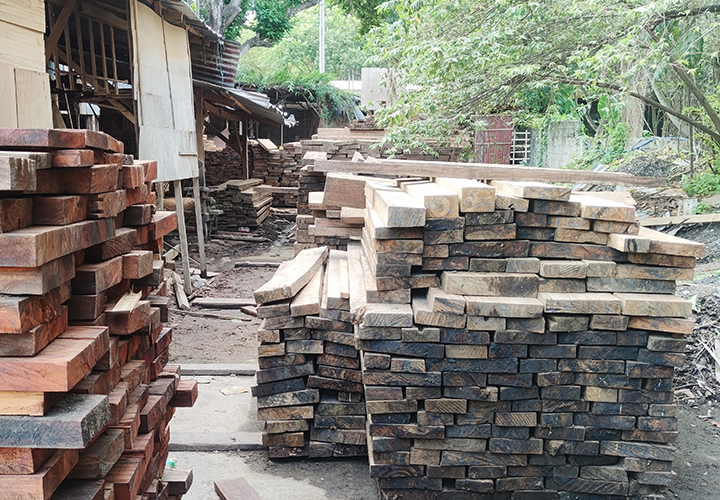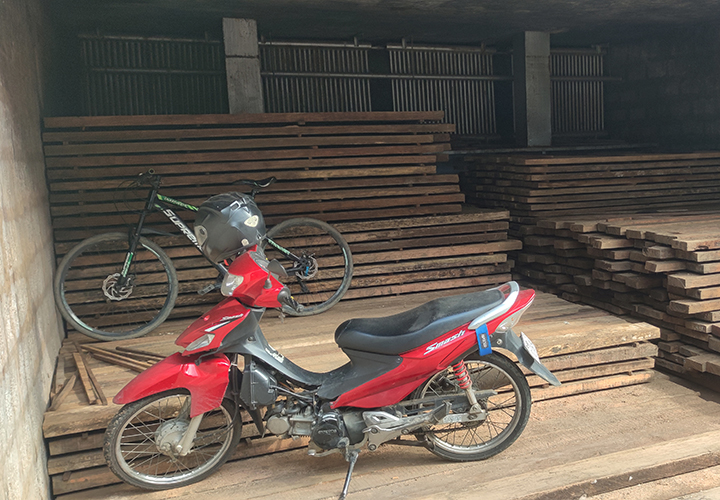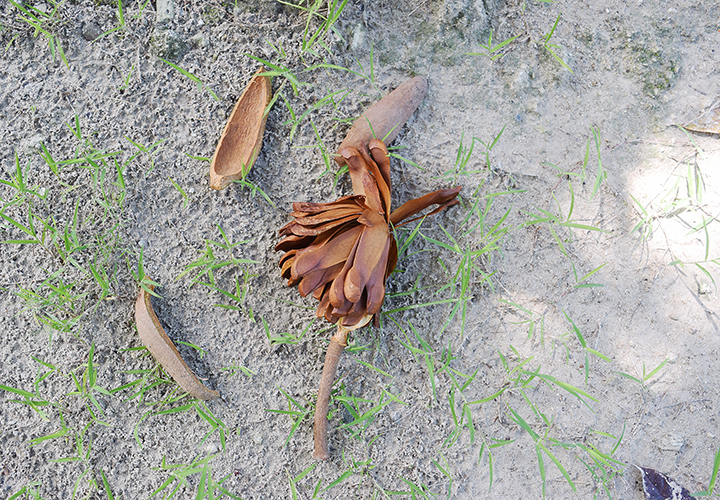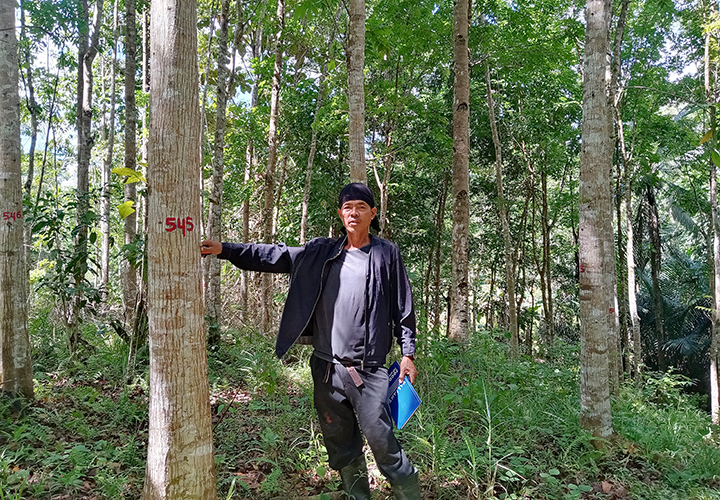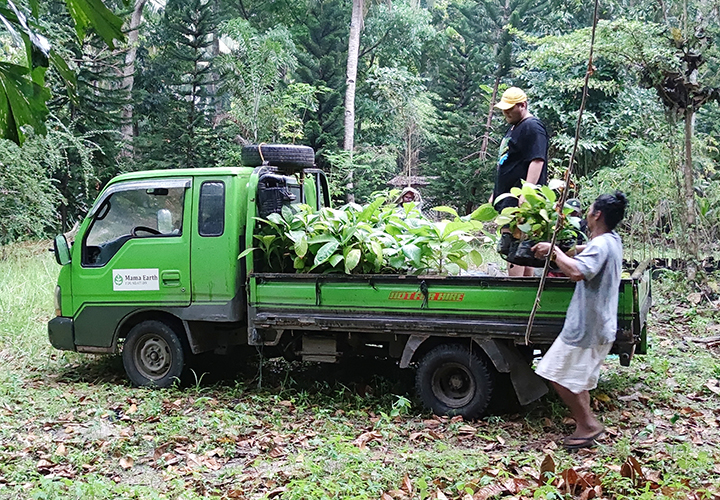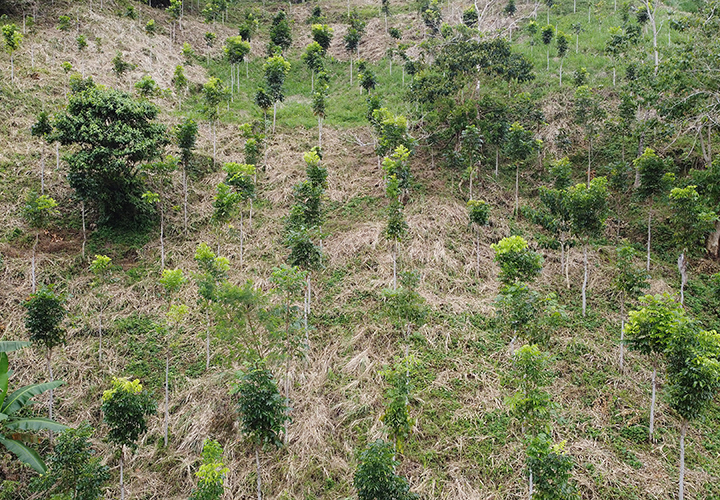Currently, lumber dealers no longer accept mahogany logs, but only planks or planks.
After drying in the air, the planks are stored in an oven to reduce the moisture again.
Mahogany seeds ripen in a fruit capsule that breaks open when it falls off, releasing the seeds.
From the seeds grow strong trees. However, this has only 22 centimeters in diameter after nine years.
As you know, in Monkayo and Montevista we work with more than 100 farmers who are already counting on the first income from the harvest. A prerequisite for a planned harvest of the mahogany trees was an inventory, which took a long time, but has been completed since January 2023, with some exceptions of the farms that need to be visited again to check the numbers.
So the three monitoring teams are at capacity. Jolly, our on-site forester is already working on a plan to selectively cut the first mahogany trees in early 2024, but only those that have reached the diameter mentioned. However, harvesting over 100,000 mahogany trees will take years as we harvest the mahogany trees that have reached the diameter.
Preparations are beginning. In the meantime, a storage place has been found on a cemented road to store the freshly cut planks for two to three months to reduce the moisture content of the wood. Otherwise, we would transport the water contained in the planks to Davao, which can account for up to 50 percent of the weight. But even after that, the wood is still not marketable. After arriving at the timber merchant, the planks are post-dried in drying chambers using hot air. This effective process is called “kiln dry” in English.
It is a pity when the beautiful mahogany trees fall victim to the saw, but as described above, the trees were planted as timber as part of our Farmer Program. And it really helps the farmers. Life on the small farms is not easy. The increased cost of living is hitting the farmers hard, but even harder are the price increases of fertilizers. Many grow corn for a living, a sought-after crop that originated in Mexico thousands of years ago. Corn can sometimes be harvested after just a few months, but it needs a lot of fertilizer. It is almost a zero-sum game due to the increased fertilizer prices.
It is also an exciting time for us as we are now starting a realistic harvest program after a long period of taking care of your trees. Even though it will be a few months before the first tree arrives at the timber merchant at a profit, it is gratifying to see that harvest time is upon us, even if it is only for a few selectively harvested trees.
We plant and plant. Here is our small truck with a fresh load of teak seedlings for Patag, Marilog.
The trees in Patag are even younger and only ready for harvesting after the harvest in Monkayo and Montevista.


